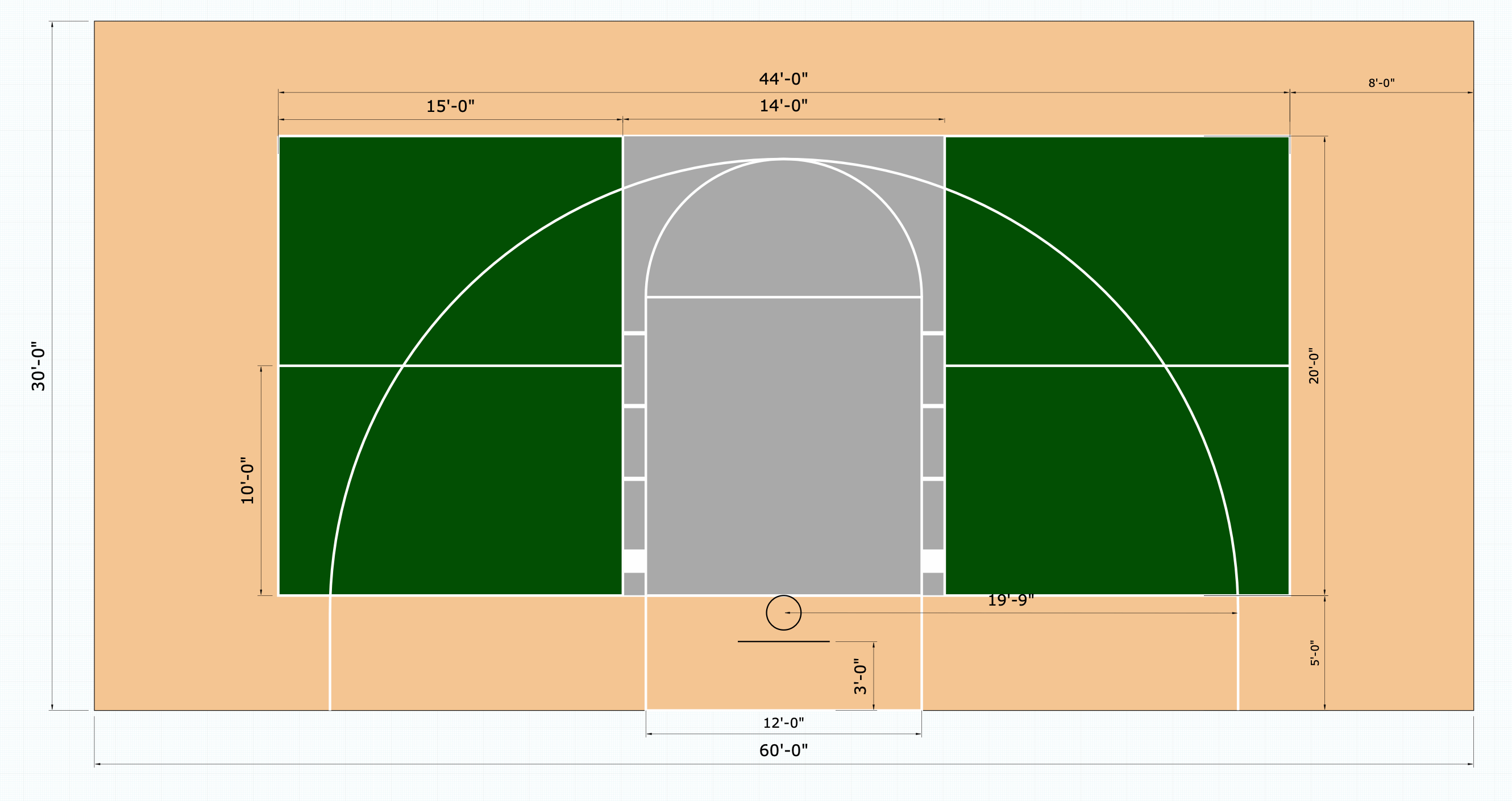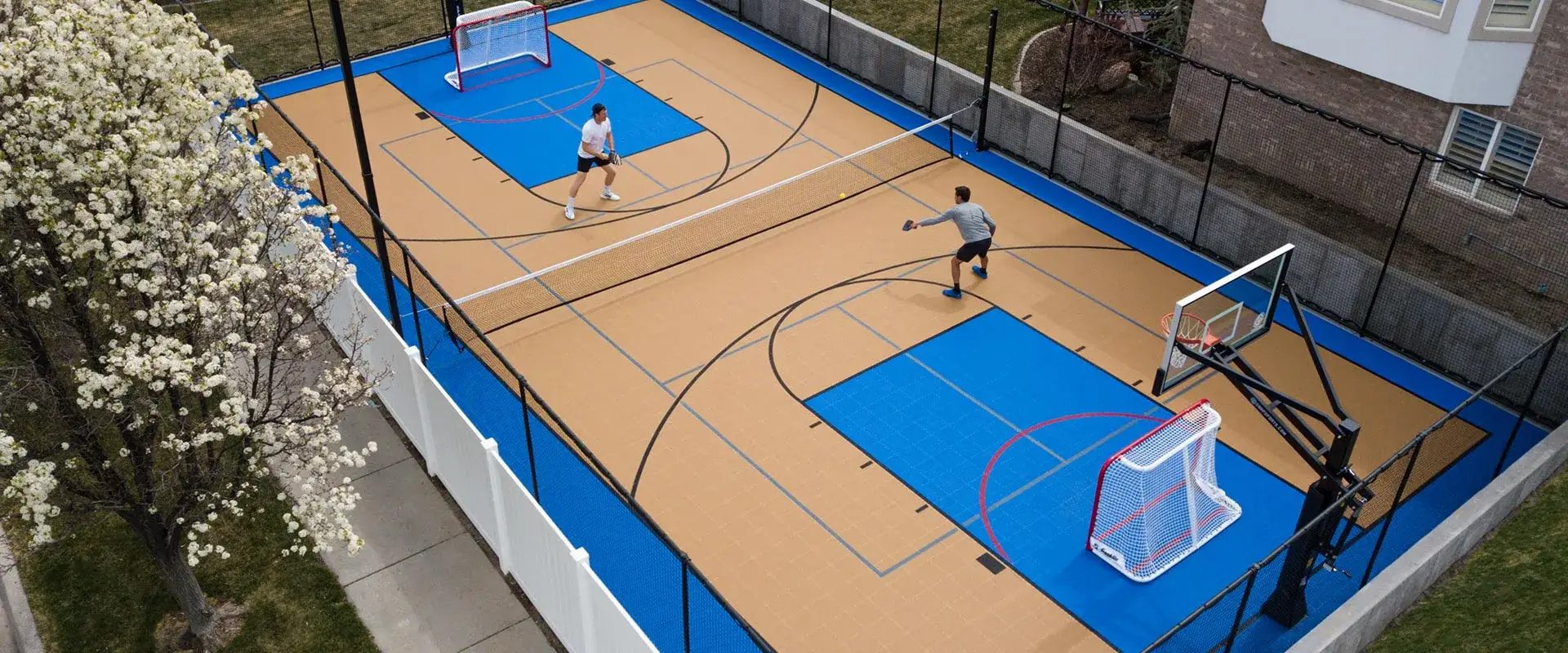Boost Your Game with Specialist Pickleball Courts Layout & Building And Construction in Illinois and Midwest
Boost Your Game with Specialist Pickleball Courts Layout & Building And Construction in Illinois and Midwest
Blog Article
Trick Factors in the Building of Pickleball Courts: From Site Choice to Final Coatings
The building of pickleball courts includes a variety of crucial variables, beginning with the selection of an ideal site that balances ease of access with ecological considerations. Crucial aspects such as court dimensions, surface products, and drainage systems dramatically impact not just the top quality of play however likewise the longevity of the center. Focus to lights and completing touches can raise the overall experience for gamers and viewers alike. Understanding just how each of these components interrelates might reveal insights that are usually ignored, prompting a more detailed evaluation of ideal practices in court building and construction.
Site Selection Criteria
When beginning on the construction of pickleball courts, it is important to pin down the site option requirements that will certainly make sure optimal playability and access. The area should be conveniently reachable for gamers, preferably positioned near suburbs or neighborhood centers, to motivate participation.
Additionally, the terrain must be level and stable, as unequal ground can cause safety risks and impact gameplay. Sufficient drainage is also vital; selecting a site with good water runoff will aid maintain court conditions throughout adverse weather.
An additional important factor to consider is the availability of energies. Accessibility to electricity and water is needed for lights and maintenance functions. In addition, distance to vehicle parking centers is vital, promoting easy accessibility for gamers and viewers alike.
Ecological factors can not be neglected; all-natural color from trees can improve player comfort, while direct exposure to dominating winds might interfere with play. Zoning policies and area support should be thought about to guarantee that the project aligns with local standards and gets the backing it requires for effective execution. By thoroughly assessing these requirements, stakeholders can produce a welcoming and practical setting for pickleball lovers.
Court Capacities and Design
To ensure ideal gameplay and adherence to policies, the measurements and design of pickleball courts have to be thoroughly specified. A standard pickleball court gauges 20 feet in size and 44 feet in size for both singles and increases play.
The internet elevation is set at 36 inches at the sidelines and 34 inches at the center, producing a minor dip that influences sphere trajectory. Court markings are equally vital; lines must be 2 inches vast and distinctive in color to make certain exposure.
Furthermore, a buffer area bordering the court is suggested, typically prolonging 5 to 10 feet beyond the sidelines and standards to suit players' motions and boost safety. Correct design and measurements not just ensure conformity with main policies yet additionally boost the total playing experience, accommodating both leisure and affordable play. Cautious preparation in these locations is vital to the successful building of pickleball courts.
Surface Area Product Options
Choosing the appropriate surface area material for pickleball courts is critical for guaranteeing optimum player efficiency and security. The selection of surface area can significantly influence gameplay, consisting of ball bounce, grip, and gamer comfort.
There are numerous choices available, each with its distinct characteristics. Asphalt is a prominent option as a result of its longevity and low maintenance needs. It supplies a strong playing surface area that can withstand different climate condition however may call for periodic resurfacing.
Concrete is another widely used material, providing superb long life read review and a smooth finish. It enables consistent sphere bounce however can be hard on gamers' joints, making it less preferable for long-term play without proper cushioning.
For those looking for enhanced comfort and shock absorption, supported acrylic surface areas present a practical option. These surfaces combine a base layer with an acrylic overcoat, supplying enhanced traction and a softer feel, which is advantageous for minimizing the risk of injuries.
Finally, artificial turf is gaining traction, specifically for multi-purpose facilities. Its convenience and lower maintenance requires make it an appealing option, though it may not give the very same round response as conventional hard courts. Careful consideration of these choices will make certain an optimum playing environment.
Drainage and Lighting Considerations
Correct drain and reliable illumination are important parts in the building of pickleball courts, significantly influencing both playability and safety. Ample drain systems protect against water accumulation, which can lead to slippery surface areas and damage to the court structure.
Lighting is equally crucial, specifically for courts intended for evening use. The positioning of lighting fixtures ought to be tactically prepared to get rid of darkness and provide even circulation of light across click for info the court.

Final Surfaces and Maintenance
After attending to water drainage and lighting considerations, interest turns to the final surfaces and ongoing upkeep of pickleball courts. Illinois and midwest. The choice of surface area material is crucial, as it affects both playability and toughness. Typical alternatives include acrylic finishes and specialized sports surfaces that offer optimum traction and padding. These coatings should be used in multiple layers to guarantee durability versus climate elements and use.

Seasonal maintenance might consist of resurfacing every few years, depending on use and ecological factors. Appropriately preserving nets, court lines, and surrounding locations is similarly important to provide a safe and satisfying having fun experience. By spending in top quality surfaces and sticking to a structured maintenance routine, facility owners can ensure their pickleball courts remain in exceptional problem for years to come.
Verdict
To conclude, the effective construction of pickleball courts rests on careful attention to numerous vital factors. Site option need to focus on ease of access and surface security, while court measurements and design need to stick to optimum standards for gameplay. The option of surface area product dramatically affects gamer safety and security and efficiency. Moreover, effective drainage and sufficient illumination add to court durability and exposure. Quality surfaces and a durable upkeep timetable are crucial for maintaining the court's problem, enhancing read this article the general experience for gamers and spectators alike.
Report this page